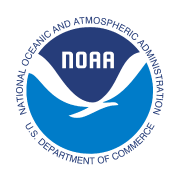
INNOVIM supports NOAA’s largest environmental data repository, the Comprehensive Large Array-data Stewardship System (CLASS). Our staff is distributed across multiple sites to support the CLASS Government Program Office to sustain, develop, maintain, and operate IT security support activities necessary for each of the CLASS environments and sub-systems.
Our scientists have also developed numerical analysis models for predictive analysis and forecasting for NOAA’s Climate Prediction Center (CPC). Our activities include:
As part of the NOAA Attribution and Reanalysis project, we perform historical runs using simulation with large ensemble members. These datasets allow us to examine long-term climate processes. Our work includes:
INNOVIM assisted NOAA in delivering decision support services to stakeholders with authoritative science and effective communication. We conducted outreach through the ENSO Blog and engaged frequently and effectively with the media while backed with comprehensive monitoring and insightful analysis of the oceanic-atmospheric states. The NOAA CPC team (including INNOVIM support personnel) won the NOAA Administrator’s Award “For extensive cutting edge and comprehensive decision support services associated with the near-record 2015–2016 El-Niño.”
INNOVIM’s capabilities span the data lifecycle. Our scientists and engineers create and collect data through sensors located on Earth and in space, manage the infrastructure that supports large-scale data analysis, and transform the results into actionable information through data visualization techniques and decision-making systems.
INNOVIM serves US government agencies including the National Aeronautics and Space Administration (NASA), National Oceanic and Atmospheric Administration (NOAA), and Department of Defense (DoD).